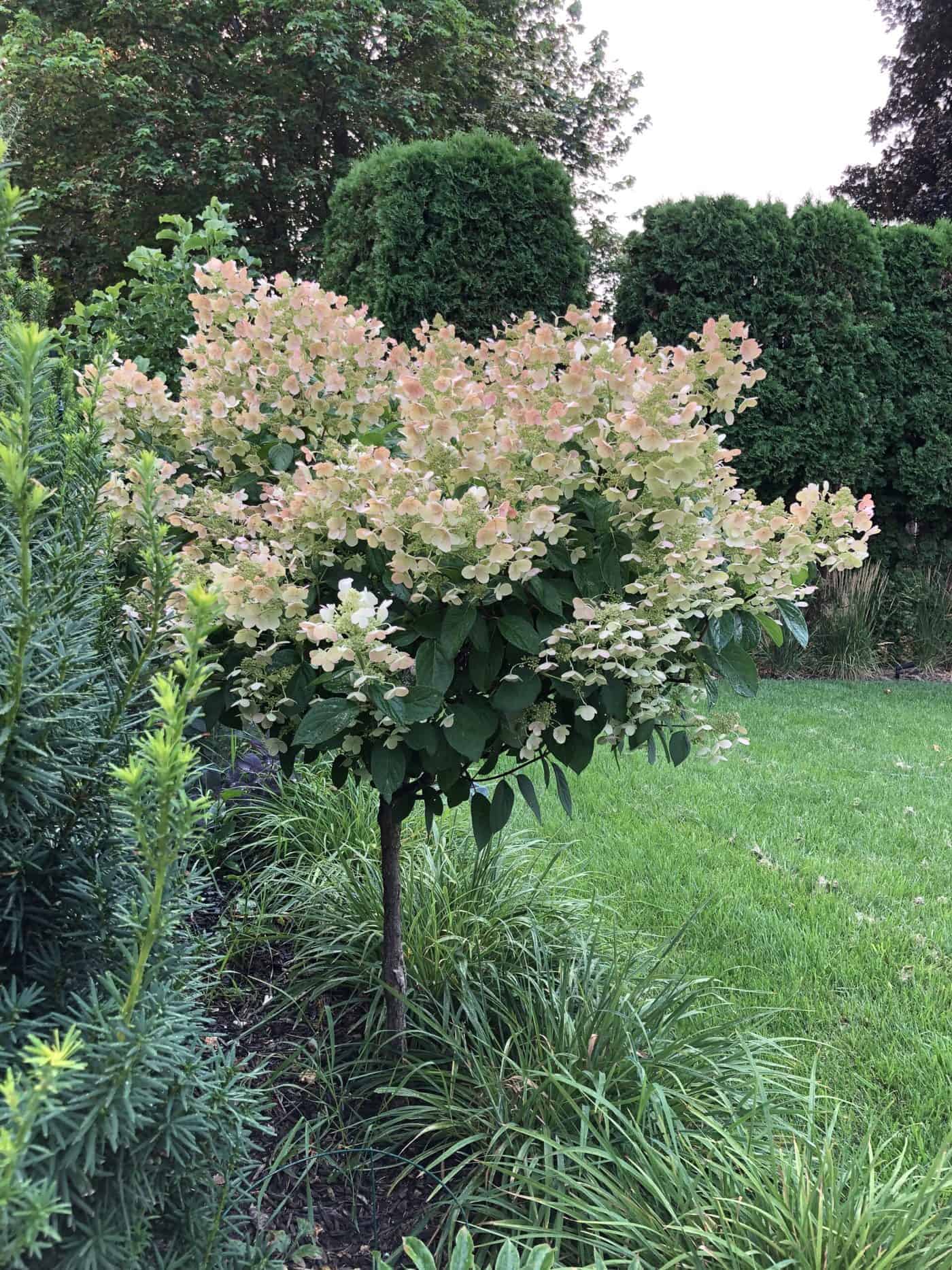Hydrangea trees are hydrangea plants that have been pruned and trained into a tree-like form. Also called standard hydrangeas, these plants are low-maintenance flowering trees that make a feature statement in the garden. Hydrangea trees are available in a variety of costs, blossom colors, and flower shapes, many of which are very easy to grow.
Hydrangea tree basics
Hydrangea trees are simply hydrangea shrubs that have been pruned and cultivated into a tree shape instead of a bushy shrub form. Tree-shaped hydrangeas generally do not occur naturally and are produced by specialty nurseries skilled in pruning and cultivating shrubs into “standard” (stand-up) form.
To get the recognizable tree shape, a hydrangea bush’s lower, thinner branches are pruned to have more of a trunk like a tree. By doing this, the middle stem is exposed, and the bush will continue to grow upwards, creating that tree shape. Any competing stems coming from the ground are removed entirely so that only the single middle stem remains (acting like a tree trunk). The process of cultivating a hydrangea into tree form takes about three years at the plant nursery before the plant can be sold.
Note that different botanical types of hydrangeas can be cultivated into Hydrangea Trees. The most common type of hydrangea cultivated into tree form is the Panicle hydrangea (like the Quick Fire Hydrangea Tree pictured below). Panicle hydrangeas form cone-shaped clusters of white-cream-pink blossoms.
Here are some examples of Hydrangea Trees currently in cultivation:
- Limelight Hydrangea Tree (Hydrangea paniculata ‘Limelight’)
- Quick Fire Hydrangea Tree (Hydrangea paniculata ‘Bulk’)
- Berry White Hydrangea Tree (Hydrangea paniculata ‘Renba’)
- Vanilla Strawberry Hydrangea Tree (Hydrangea paniculata ‘Renhy’)
- Pee Gee Hydrangea Tree (Hydrangea paniculata ‘Grandiflora’)
- Pinky Winky Hydrangea Tree (Hydrangea paniculata ‘DVPpinky’)
Here’s a big list of commonly available hydrangea tree varieties to check out.
Because the hydrangea tree is actually a bush, it has some similar structural elements to a bush. It has shallower roots than most trees, which makes it easy to plant in a pot and move it wherever it looks best.
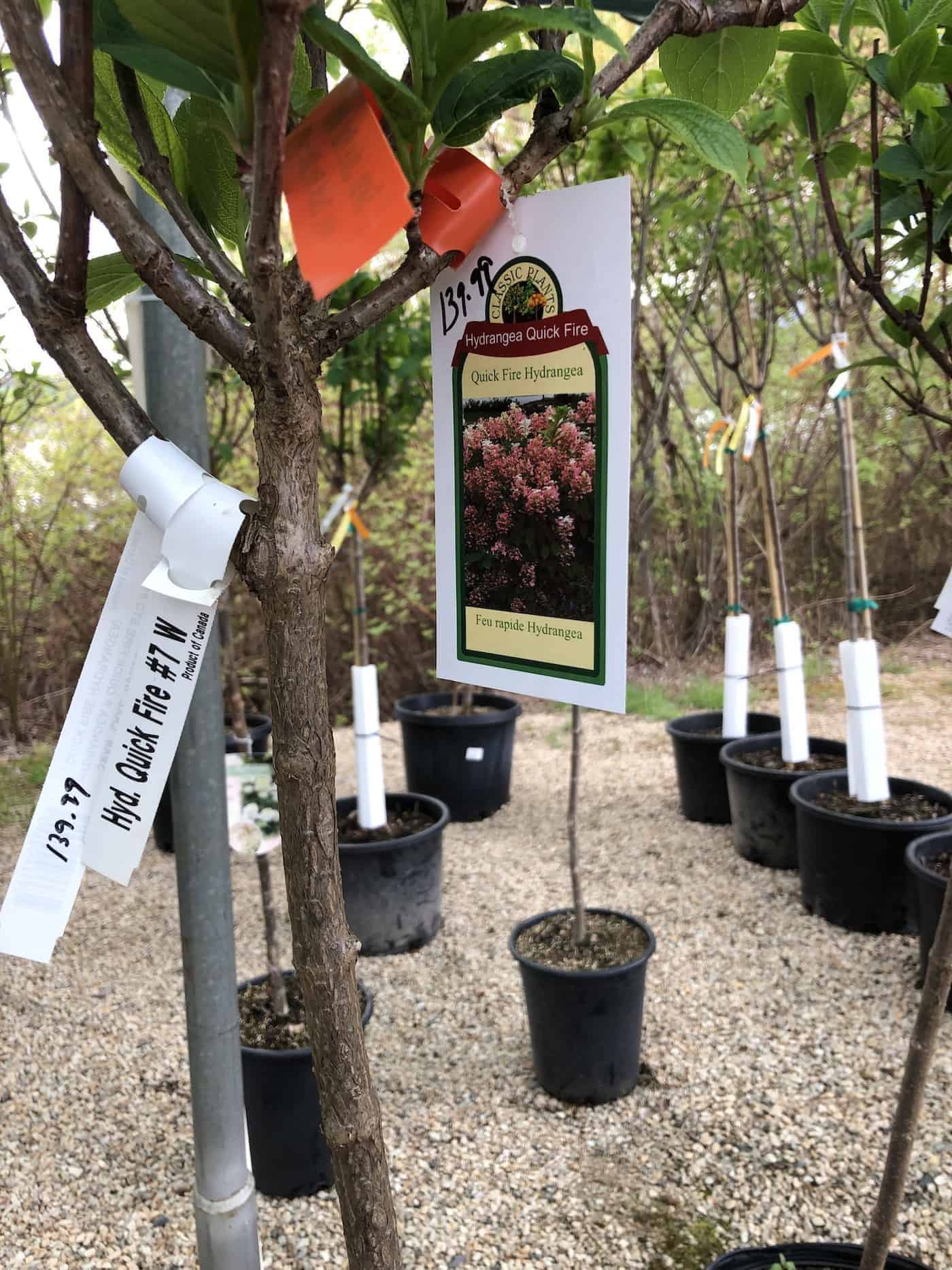
Planting hydrangea trees
While the hydrangea tree is easy to care for, it can only be the case if planted properly. Planting the hydrangea tree correctly is the first step to having this healthy, beautiful tree thrive in your garden. Location, depth, and moisture are the three key elements of planting a hydrangea tree.
The best time for planting a hydrangea tree is in early spring or late fall when it is not too hot at any point in the day, but there is still plenty of sunlight. This way, the plant can really take to the soil without having to withstand extreme temperatures. Plant it in the morning while temperatures are still cool so that the sun does not dry up any of the tree’s first sips of water in the new soil.
Where to plant hydrangea trees
The place where you decide to plant your hydrangea tree is very important and should be thoroughly considered. While how it looks in your garden is important, it is even more important to put it in a place where the ratio of sunlight and shade is correct. Plant your hydrangea tree in a place where it will get at least four hours of sun every day and at least partial shade during the hottest part of the day. Places with morning and early afternoon sun but shade in the late afternoon are ideal.
When planting a hydrangea tree, it is important always to follow those sun/shade guidelines. We say this because it applies when planting a hydrangea tree that is already grown and when planting a hydrangea bush that you are going to prune into a tree as it grows. Another important factor to consider is that the farther north you are, the more sun the hydrangea can withstand and the more sun it probably needs.
The moisture in the soil and how well it drains is important to consider when planting any plant. Hydrangea trees thrive best when they have soil that drains really well. Even though the soil needs to drain well, hydrangea trees need plenty of water, enough that the soil stays damp. The soil should not be allowed to dry out, and this is part of the reason that partial shade is important. Too much sun dries out the soil, and hydrangea trees need as much water as they can get without drowning.
How to plant hydrangea trees
Hydrangea trees, as discussed, are actually shrubs that have been trained into the shape of a small tree. This means that they have roots like bushes that are not very deep. Because of the shallow roots, these trees need to be planted no deeper than how they are in the pot they come in.
While the planting hole should be no deeper than the soil inside the plant pot, the hole should be about twice as wide as the planter pot. A wide shallow hole is best for planting hydrangea trees.
Carefully remove the planter pot from the root ball. Loosen up any large roots winding around the outside of the root ball. Gently place the tree into the planting hole. Check to see that the base of the tree is at the same level as the soil surrounding the hole (and add soil under the root ball if necessary). Carefully backfill the hole with the soil that came out of it. While not strictly necessary, you can mix a transplanting fertilizer into the soil before backfilling. Water thoroughly after planting, checking to ensure the water drains easily into the soil.
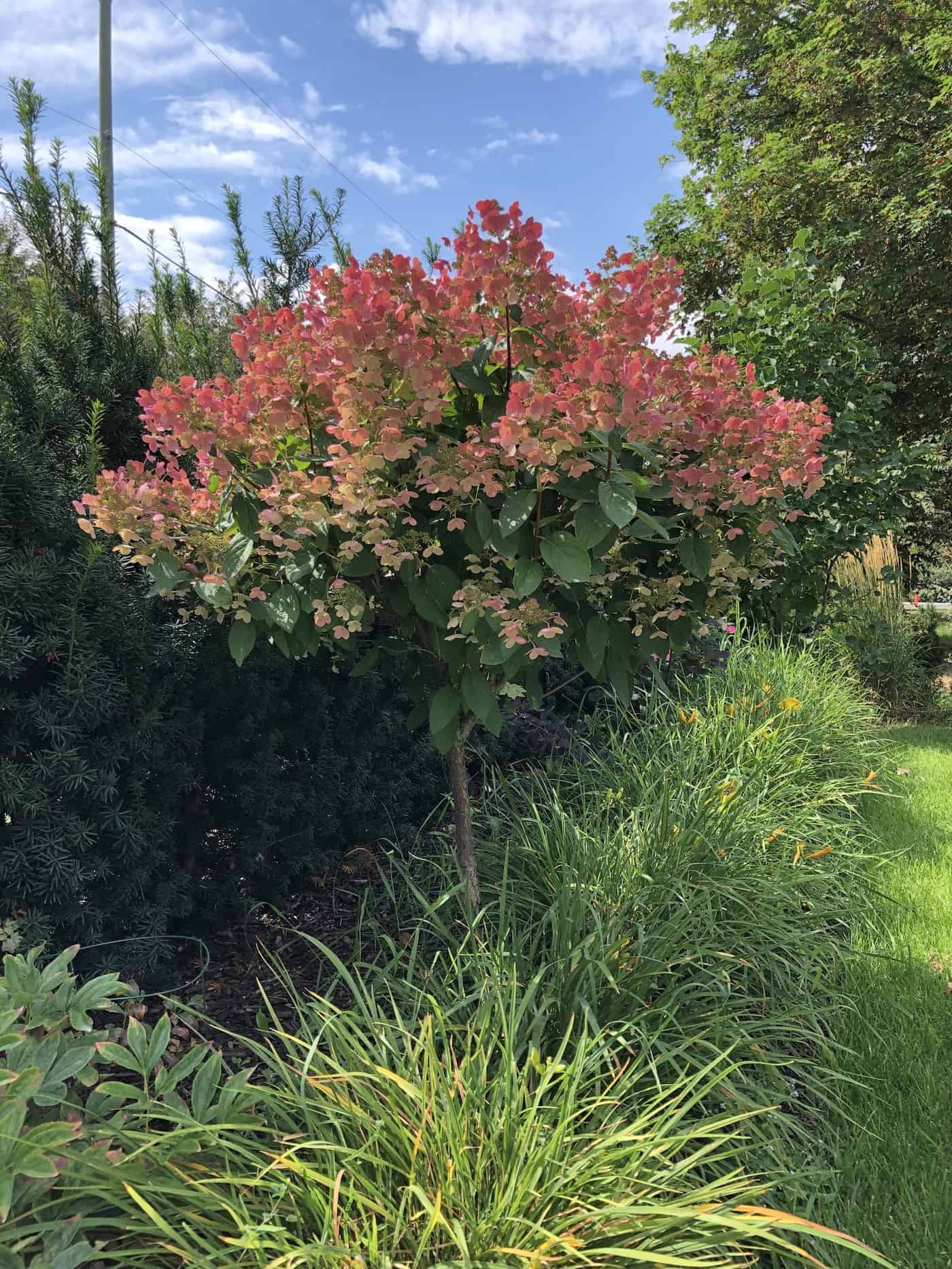
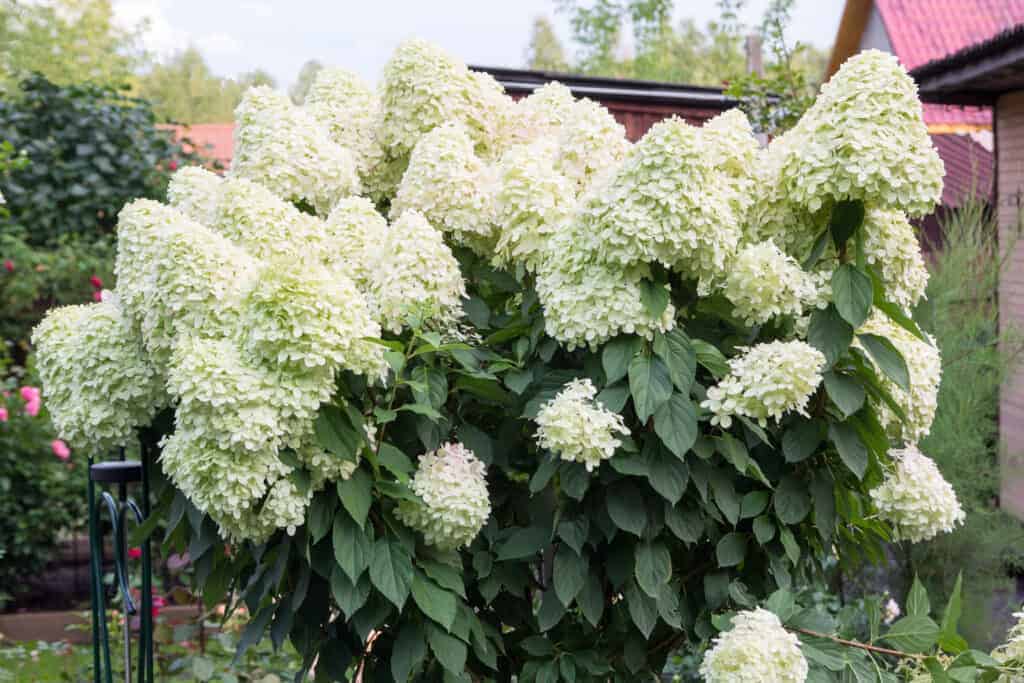
Plant care for hydrangea trees in the landscape
After you have successfully planted your hydrangea tree, some important steps to taking care of it cannot be overlooked, especially at the beginning. The new tree will need proper watering, pruning, and special care during seasons of extreme temperatures.
Watering hydrangea trees
Like any other plant, hydrangea trees require water. This necessity of plants is an obvious one, but it is helpful to know how much to water your hydrangea tree and when to water it. Hydrangea trees absorb water very quickly, and they need a lot of it. Hydrangea trees will require even more water in hot temperatures than in cooler weather.
In warm, sunny weather, when a hydrangea tree has little to no shade, the tree should be watered twice a day to avoid drying out. When it is not as sunny and warm, or the tree has quite a bit of shade, watering it two to three times a week should be just what it needs. However, it is up to the gardener to decide how much to water the tree as it is not always so straightforward. If the soil is dry, the tree could use some water.
It is more important to make sure the tree does not get too much water in the colder months with less sun. If a hydrangea tree is over-watered or has excess moisture on the leaves, it could cause mold growth, damaging the tree’s health. This is a problem to look out for, especially in more humid climates.
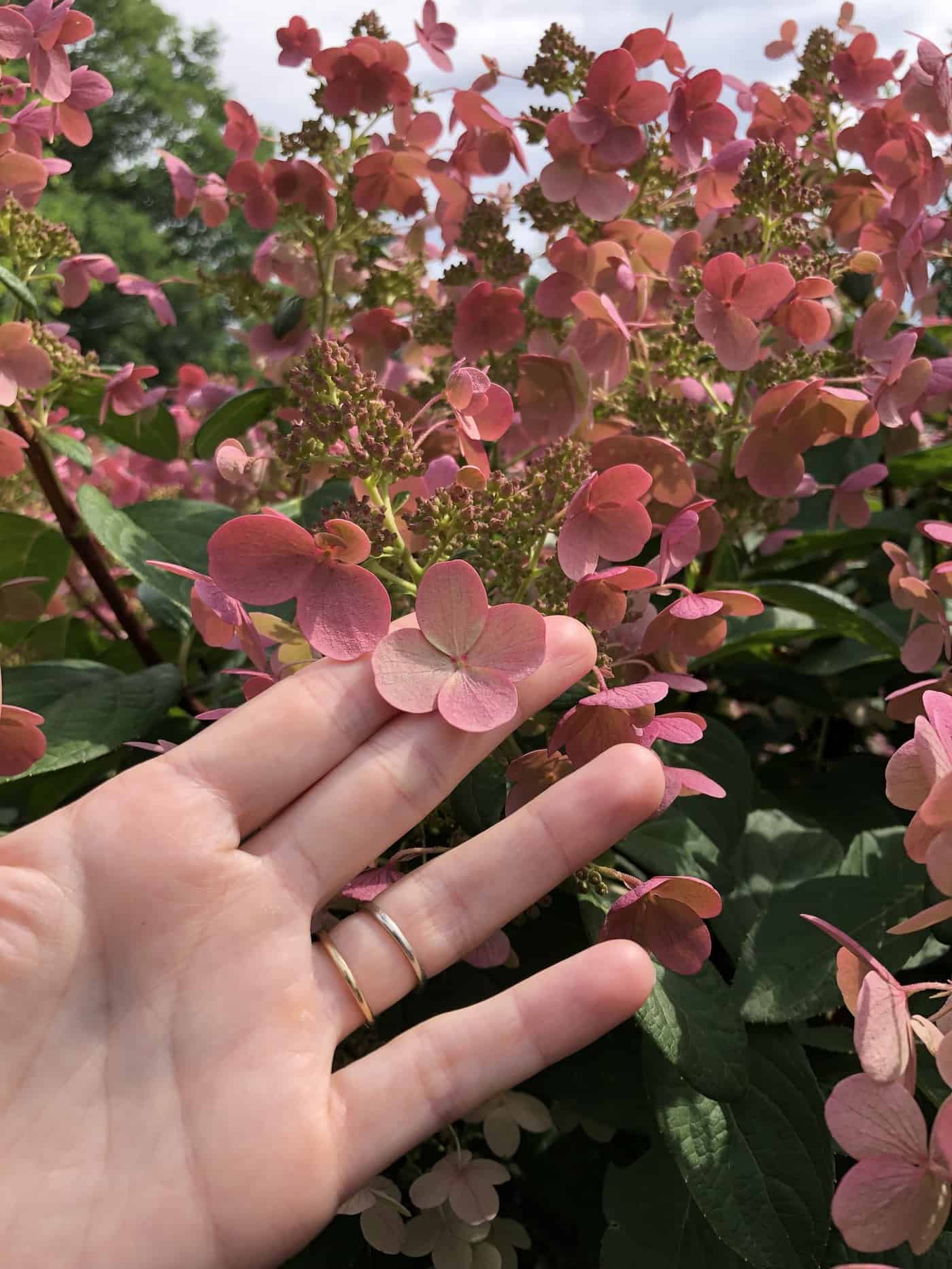
Pruning hydrangea trees
Whether you decide to cultivate a hydrangea tree from a bush or buy it already grown and cut like a tree, you will need to prune it from time to time. Here is the most important information to know when going in to prune your hydrangea tree:
The best time to prune most types of hydrangea trees is in cooler months, generally late fall to early spring. Most types of hydrangea trees bloom on stems grown that spring, so dormant pruning will not remove future blossoms. Hydrangeas usually bloom from summer to early fall, so you do not want to cut off those beautiful flowers to keep the tree shape. Pruning during the recommended times will increase the amount the hydrangea tree can thrive and blossom during the summer.
When pruning, the goal is to create a stronger, healthier, better-looking tree. Because of this goal, the main focus is to cut away any weak or crossing branches. In addition to cutting away the weak and crossing branches, cut the parts of branches that stick out of the shape that you want the tree to be in. You can also let the hydrangea tree grow in its normal shape while continuing to cut any new shoots off the tree’s ” trunk ” to keep it looking like a tree.
If you are trying to prune a hydrangea bush to look like a tree, you need to take a few extra steps. When it is already a tree, you should cut away the weak or crossing branches to leave room for stronger ones. You can also customize the shape of the bush to a tree shape so it stays looking that way as it grows taller. Make sure to cut branches from the base to create a trunk. Keep any extending branches at least 6 inches off the ground and keep everything neat to avoid it becoming too bush-like.
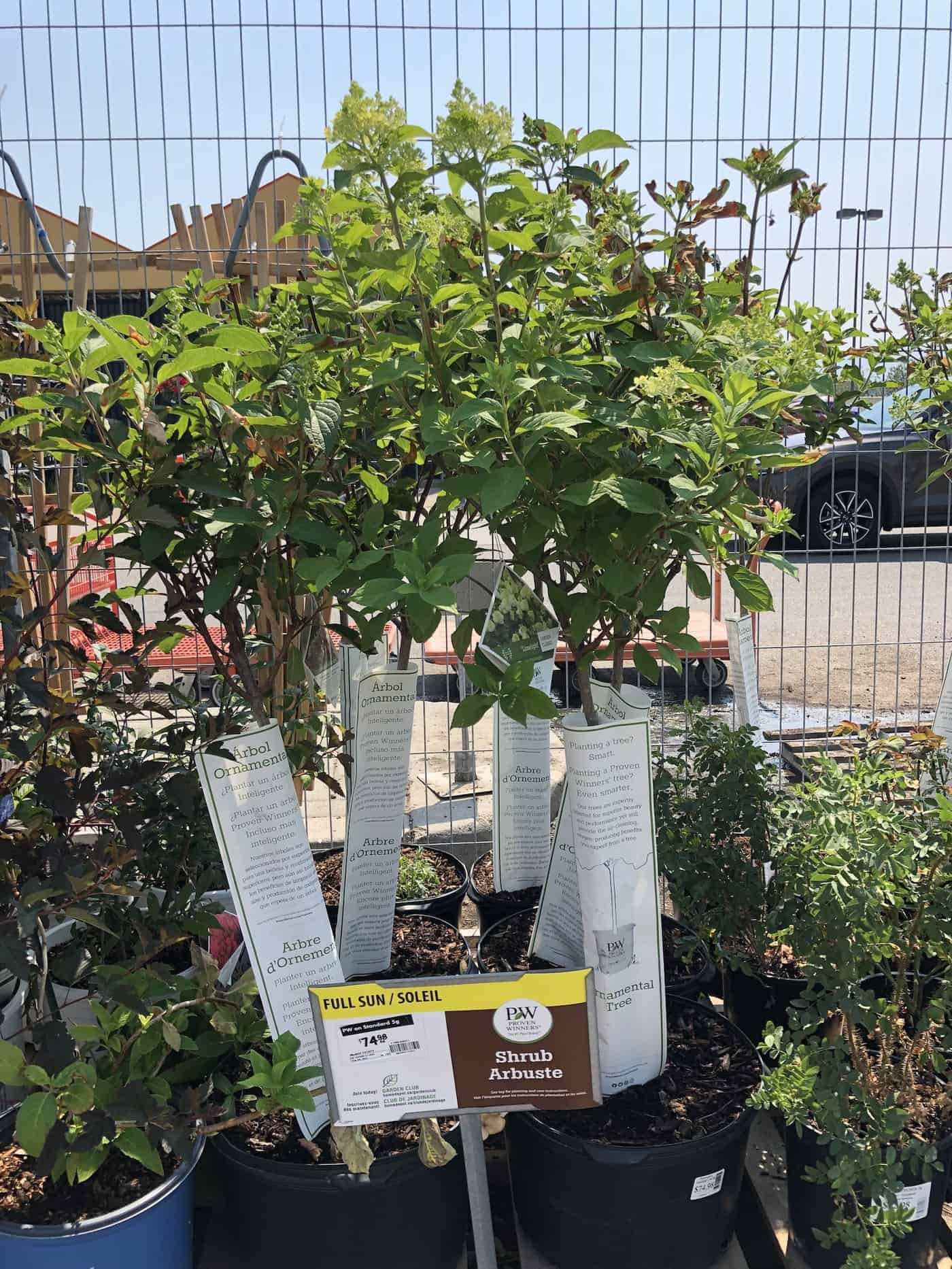
Seasonal care tips for hydrangea trees
The special care we are referring to is the changes you must make to the tree when extremely cold or extremely warm temperatures are prevalent in your area. Here is how to keep your hydrangea tree thriving throughout any season:
Winter care for tree-form hydrangeas
Even though hydrangea trees do surprisingly well through cold winter weather, it is still important to take a few extra measures to keep your hydrangea tree healthy.
Because most plants struggle in the winter, it is important to cover them; the same goes for hydrangea trees. At night and during storms, you should cover your hydrangea tree with a bedsheet, burlap sack, or something else similar to keep the tree warm. You should also lay down a generous layer of mulch around the tree to help keep moisture in the soil and regulate water drainage.
Summer tips for hydrangea trees
Summer heat can be fatal to dehydrated hydrangea trees, so it is important to take precautions so that your hydrangea can stay hydrated and happy. When it is hot outside, check the soil often to ensure it never dries. Keeping the ground moist will help the hydrangea tree fight through the heat. If you can, and the tree is not already shaded, try to provide some sort of shade for the tree during the hottest part of the day, like an umbrella or bed sheet.



